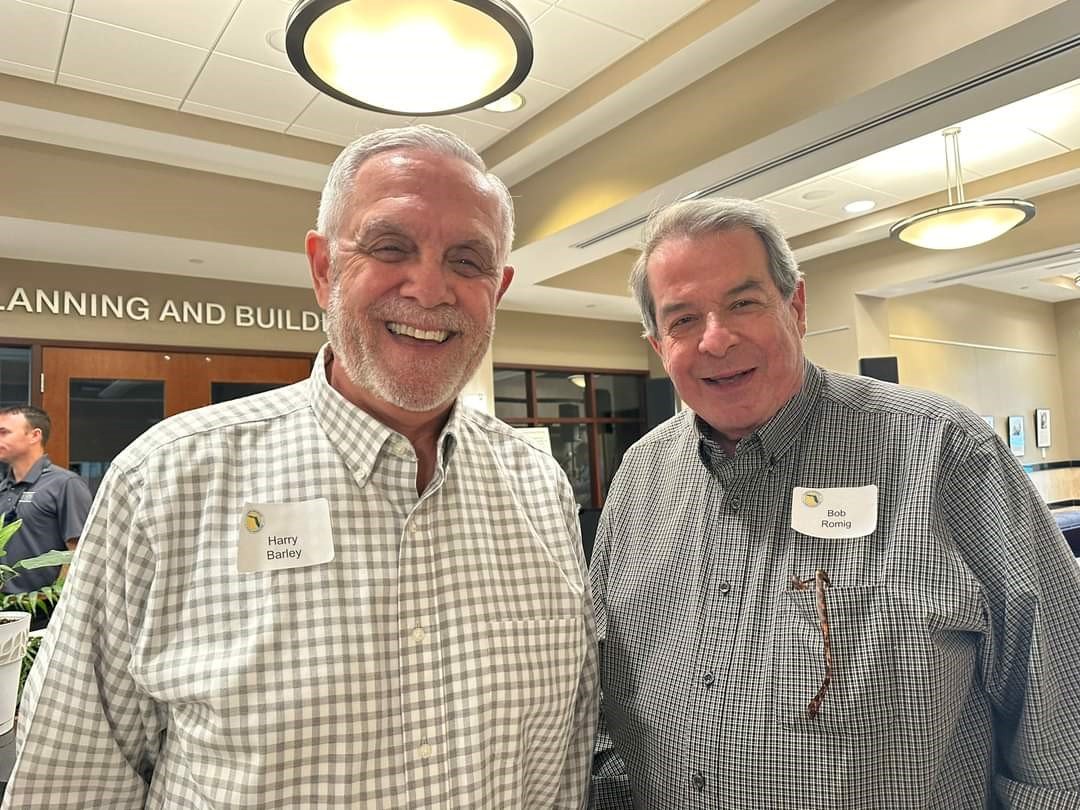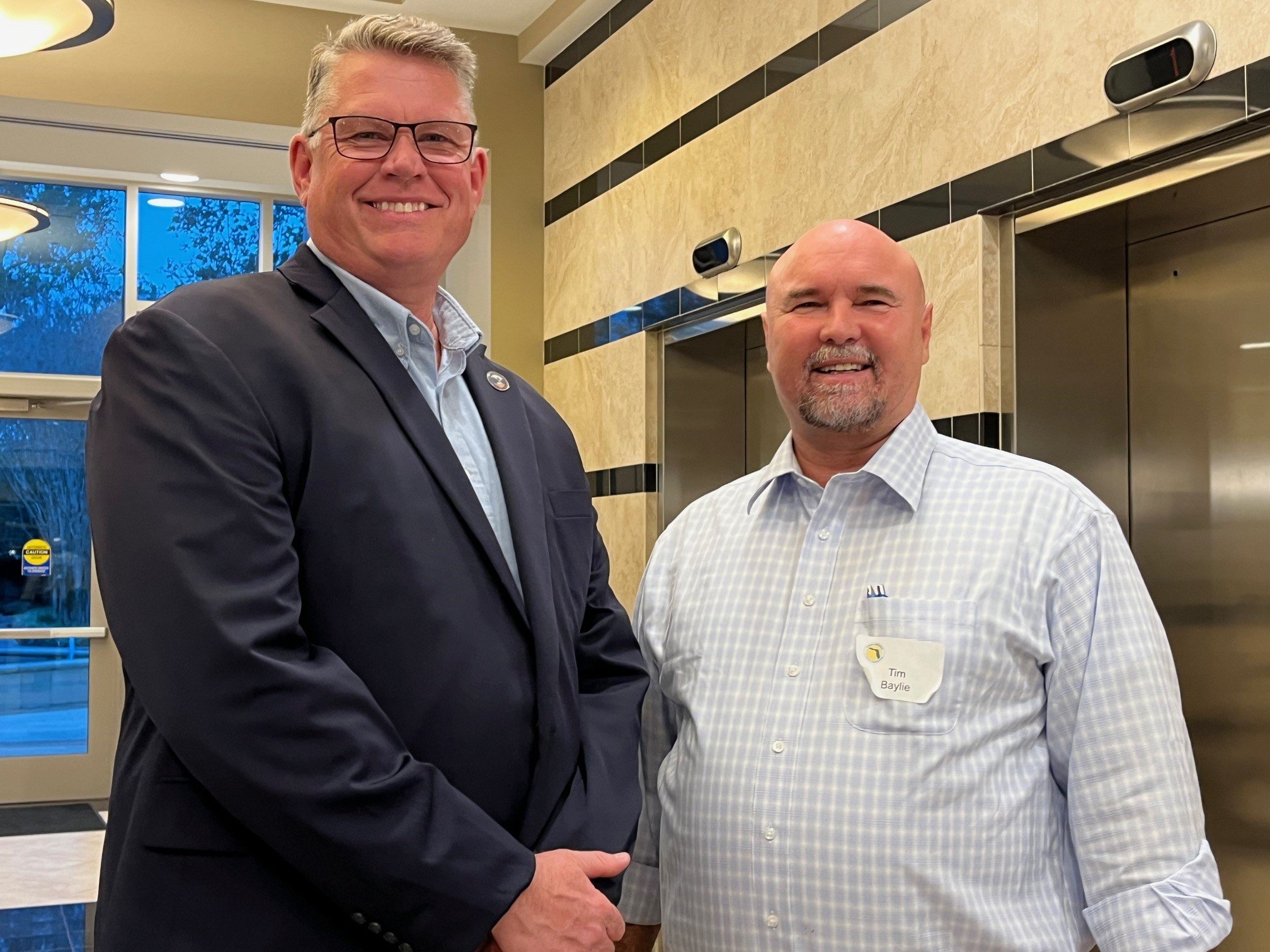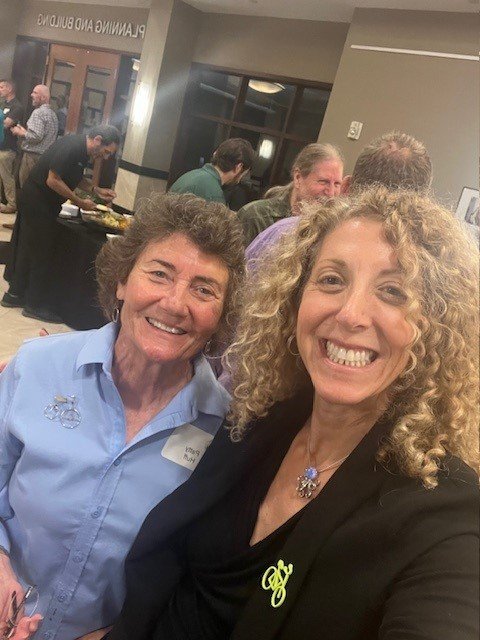FGTF Kicks off 2024 in a Big Way!
By Ned Baier, FGTF, President
Winter Garden, FL- A group of over 65 advocates and professionals working for a statewide network of Greenways & Trails came together on February 29 & March 1 in Winter Garden to discuss and celebrate progress by central Florida communities implementing the vison and trail and greenway issues needed to be addressed the year ahead.
Participants in the two-day workshop met as part of the FGTF Board meeting and reception held at the Winter Garden City Hall.
The participants included our FGTF Board of Directors led by President, Ned Baier, FGTF Honorary Board members, foundation and non-profit leaders, local agency staff, volunteers, state Department of Transportation and state Department of Environmental Protection staff, health advocates, urban planning consultants, and researchers.
A reception followed in the evening sponsored by major sponsor HDR, Engineering and included music provide by local musician Steve Ferrell. We thank our financial sponsors attending our reception including: HDR, Bowman, Dewberry, Elipsis, HNTB, Friends of Lake Apoka, HALFF, Kimley Horn, and Volkert, Inc.
Jon Williams, Winter Garden’s City Manager, and Andy Stewart, Oakland’s Town Manager, welcomed everyone. Jon told the remarkable story about the downtown area’s revitalization and the role the West Orange Trail played in this. The Town of Oakland, Winter Garden’s neighbor to the west, is a smaller community but has also benefited from the West Orange Trail as a catalyst for growth. The trail is a valued community asset, and it has become a regional destination. A popular component of each of the Foundation’s in-person meetings throughout the state is to learn about the trail system that is evolving in that region -- state, regional and local trails. Today’s meeting featured reports from the City of Orlando, Orange County, Lake County and Bike/Walk Central Florida.
Cade Braud provided an excellent overview of the City of Orlando’s trail system – what’s in place today and components in various stages of development. Emphasis was put on major projects such as several downtown loops, an impressive structure crossing SR50/Colonial Drive, the importance of connectivity with neighboring jurisdictions and safety (including Project Zero). He also mentioned their Bicycle Friendly Business Program and they were honored to be chosen as among the top 10 cities in the country. Cedric Moffett highlighted current trails and future projects throughout Orange County, including segments of the C2C Trail. He too emphasized the importance of connectivity to improve the operation of the overall system. Cedric’s project maps were very well done but Sally asked for a 1-page map showing everything he covered in Orange County. Commissioner Sean Parks opened the next segment by welcoming everyone to Central Florida and calling attention to the growth in Lake County. Commissioner Parks reported that the county doesn’t have a dedicated source of funding yet for trails, but they have requirements in place for new developments to connect with trails. He mentioned a bond referendum that was passed in 2004 that will be taken back to voters for renewal in 2024 for land acquisition and connecting these lands to trails. Gallus Quigley provide an overview of the County’s trail system. Emily Bush, Executive Director of Bike/Walk Central Florida and an Honorary Board Member, introduced a new partnership effort with the Foundation for a Healthy West Orange. Then Lesa Boettcher walked everyone through the Foundation’s evolution and how they became a partner with the Healthy West Orange Trails Connection. This is looking at a number of opportunities to improve bicycle safety in West Orange County by working with citizens, businesses and government organizations. The Foundation has been a convener and a financial supporter of this effort.
Robert Barto, Florida Manager for the East Coast Greenway Alliance (and an Honorary Board Member) provided a project overview explaining that the idea for a greenway between Canada and Key West goes back to the 1990s. 30% of the project is now done with about 1,000 miles either done or protected. In Florida, about 40% of the project has been completed with 240 miles protected. Robert reviewed new designations and previewed new segments that are coming.
Jim Wood FGTF Honorary Board and HDR explained the basics of conservation easements as he learned about them during some periods of his professional work earlier in life. He explained he was not a subject matter expert but had some information that would be helped to get things started. This is important for Board members given the opportunities that were included in SB 106 for integrating greenways, trails and Florida’s Wildlife Corridor and the fact that 80-90% of state funding for land acquisition is going to conservation easements. Jim reviewed the standard features of an agreement which stipulates that public access is not provided. It was agreed that Jim’s presentation was a helpful first step, but everyone was eager to learn more.
Dr. Daniel J. Smith, Center for Wildlife Ecology at the University of Florida, was with the Foundation Board in June 2023 when he spoke about our state’s transportation system being the number one threat to Florida’s wildlife. He said today’s presentation would shift the focus to solutions – that is, options for improving conditions during the transportation planning and project design process. This begins with acknowledging that roads (and other transportation projects) are barriers to movement and connectivity. Dr. Smith reported that Florida has built at least 100 wildlife crossings since 1990 – more than any other state. There are still 270 hotspots, and 185 bridges need modifications with fencing or landscaping. There are also issues with managing vegetation, drainage, lighting and the presence of humans. Overpasses and underpasses can be very effective if done properly. Dr. Smith had a number of visuals from the US and overseas to help everyone understand the range of considerations that have to be considered and the various options. Discussion ensued about FDOT, MPOs and local governments taking on a larger role to address these concerns. This needs to begin with education – and that calls attention to the importance of Dr. Smith’s work. A suggestion was made that this needs to be a consideration in putting together Project Zero plans, especially since wildlife accidents can also contribute to human injuries and fatalities. Dr. Smith mentioned that some properly designed overpasses and underpasses have reduced wildlife fatalities by as much as 97%.
Traci Deen provided an overview of Conservation Florida and distributed a copy of Conservation Florida Wildpost (which is a very informative publication). She reported that they are an advocacy organization but later explained that they are also responsible for brokering the conservation easement deals involving the state and private landowners.
Bob Romig provide an update on the current legislative session in Tallahassee which ends on Friday, March 8. There are two safety bills – one bill (HB 1133 / SB 1528) is expected to be approved; the other bill (HB 1469/SB 1664) on hands-free driving is not moving. The gaming compact bill (SB 1628 / HB 1417) is expected to pass. This provides significant funding for public land acquisition with priority being given to the Florida Wildlife Corridor. However, the gaming legislation itself is pending in both the state and federal supreme courts. There is also a transportation bill (HB 7049/SB 1032) moving ahead that has to do with CUTR Board appointments, MPO operations, elimination of the MPO Advisory Council and studying FDOT district boundaries. There was a discussion about SB106 and the need to keep members of the legislature informed about what is being implemented and possible obstacles such as public access with conservation easements.
Tina Russo led a discussion about Safety. She described a recent fatality on the Coast-to-Coast Trail in Pasco County. It seems that the victim might have gotten overly confident on a 10-mile trail segment with no street crossings -- and was hit in a crossing immediately after this. Tina asked the Board a provocative question: “Who’s in charge of safety?” A lively discussion ensued. There is no one person or agency and there’s no single agency as the lead. It was noted that many safety issues need to be addressed in the design phase to avoid incidents. It was suggested that best practices also include everything trail related including safety, signage, design, and operations and maintenance.
Ned Baier and Kim Delany explained how they tackled the project then laid out about 15 goals to be accomplished in the next two years. This was an ambitious list for an all-volunteer organization. Then they focused on the elements that needed to be taken on in the next 6-12 months. Much of this discussion centered on a possible 1 or 2 day workshop/summit sponsored by FGTF. Possible venues and dates were discussed. Everyone agreed we should steer clear of legislative activities in Tallahassee so Senators and Representatives can attend. The summit could also help with generating income for the Foundation, which was another goal. The discussion wrapped up with looking at February 2025 more closely for the summit. 2025 marks the 10-year anniversary of the Sun Trails legislation so celebrating this could be a theme for the event.
Harry Barley reviewed the background of the Honorary Board, recent changes and its current composition. Then he outlined some prospective roles for Honorary Board members who would like to be more involved in Foundation activities. A terrific example of this is what Sally Thompson (an Honorary Board member) has done in recent months with the Foundation’s Facebook page.
What a great day! Did we mention that FGTF Board member Mike Stephens organized two bike rides on local trails before and after the event. (See story)
Thanks to FGTF Board members Laura Kelley, Harry Barley, Kim Delaney, and Mike Stephens for the instrumental role in planning this very special event!









